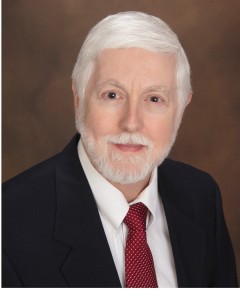Sometimes the whole is less than the parts. “How to Prevent Gun Deaths? Where Experts and the Public Agree”, January 10th’s article in The New York Times’ blog The Upshot is a perfect example. (We do resent the Times’ grabbing that title. It would have been far better used by a pro-gun blog.)
In a series of graphs, the authors depict relative consensus among “dozens of social scientists, lawyers and public health officials” who are “many of the country’s best empirical researchers on gun policy”. They don’t explain why they chose those particular interventions, but they presented these chosen experts with 29 options for theoretically diminishing “gun violence”. The resulting graphs quantify their opinions of the interventions’ effectiveness versus the popularity of the same options by the public.
If this were taken at face value, we would immediately agree to institute background checks on all firearm purchasers and bar sales to anyone convicted of any degree of violent crimes. Their experts were more ambivalent about “a national gun registry and an assault weapons ban” but were not impressed by the idea of nationwide concealed carry recognition.
All but one of the 29 propositions were reported to be favored by the majority of the public polled (by Morning Consult, which describes its respondents as demographically balanced registered voters, though their detailed methodology can’t be found). The one is the idea of having to “Demonstrate need” in order to own a gun.
The 18 ideas the experts approved and most of the panel liked included microstamping, an “Assault weapon” or “Semi-automatic gun ban”, background checks for all ammo purchases, and a “National” or “Centralized” registry of all gun purchases.
Many other polls have shown that most Americans reject the idea of universal gun registration. Microstamping has never been feasible despite laws demanding it and background checking ammo purchases could not be operationalized in New York where it was nominally required since 2014. In any case, wherever similarly intended firearm ballistics testing has been mandated, it has solved no crimes. And real firearm experts know that “Assault weapons” as commonly understood are the same as “Semi-automatic” guns.
At least, there are a couple of generally positively viewed steps: “Expand mental health treatment” and “Report lost or stolen guns”. But it’s not explained whether these would be (somehow) required by law or are presented as just good ideas.
Their expert panel includes either 32 or 40+ (in different paragraphs) “current or retired academics in criminology, public health and law, who have published extensively in peer-reviewed academic journals on gun policy”. They are right that their group is an “imperfect measure of what people steeped in the research think”. You might call it a “weighted average”.
By their own admission, only 5 of the experts generally oppose gun control policies. This group rated all but two policies as ineffective and opposes blanket policies, compared to those who generally support gun control. Those two policies were expanding screening and treatment of mental illness (not routinely depriving them of firearms) and restricting gun sales to convicted stalkers in addition to violent criminals.
They did quote one, retired criminology professor Gary Kleck, who pointed out that although laws theoretically apply to everyone, “criminals, being criminal, don’t obey the law.” This sounds pretty reality-oriented compared to anti-gun public health professor Daniel Webster, who seems to believe that because “there’s a whole lot of [non-controversial] gun policies” that is reason to adopt them.
Finally, the authors report the views of law enforcement on their chosen set of interventions. It’s pretend, because after soliciting the membership of two unnamed law enforcement groups (chiefs and line officers) they received only 100 responses. They mixed them together, which disguised the usual split in opinions between political appointees who prefer restrictions and the badges on the street who favor gun rights.
Perhaps surprisingly, perhaps due to the undefined mix of returns, this “group” prefers expanding treatment for the mental ill and barring sales to at least some of them, stronger sentences for illegal gun possession, and nationwide concealed carry recognition.
The authors do mention one intervention that has nothing to do with addressing firearm possession. They’re right that “particularly for gang-related gun homicides . . . programs that focus on community outreach can reduce gun violence in cities”.
So what does this collection of opinions come to? Just that, opinions that track the typical attitudes of New York Times people. The rankings that conclude the article, “What Works and Doesn’t Work in Reducing Gun Deaths”, is just a list of options the authors chose listed by average effectiveness according to overwhelmingly anti-gun experts also chosen by the authors. This would better be titled “What Bui and Sanger-Katz Think About Gun Control Actions”.
When more than five-sixths of their hand-picked experts represent the academic rights-ignoring ascientific paper producers endemic to mainstream media and organized medicine, there is no balance. The differences in types of recommendations made by the pro- and anti-gun representatives demonstrate how far apart the “experts” really are.
Fewer recommendations come from those who are more supportive of Second Amendment rights, who are typically less idealistic about the effect of laws on behavior. This suggests that they may be more realistic if the goal is to reduce violence rather than to dominate Americans.
More in this case means less. This mess mass of data, graphs and suppositions is just another op-ed recommending all the usual restrictions that anti-gun activists want to impose on our lives. Its force comes only from the impression given by gathering so many “experts” of like minds and politics who hold the same rather elitist views about the meaning of guns in America.
Realistically (literally), precedence ought to be given to the opinions of those who confront violence every day on our behalf. Though the sampling was as unreliable as that of the “experts”, law enforcement’s bottom line still included what we already know are its rank and file’s priorities. That is, increased attention to the mentally ill, coming down harder and longer on illegal gun users, and encouraging widespread personal carry by the true first line of defense, armed Americans.
Those are clear, straightforward, and meaningful real-world recommendations based on experience. Which is to say, these findings arise from a much more scientific approach than The Times‘. They are considered, tested, and proven.

— DRGO Editor Robert B. Young, MD is a psychiatrist practicing in Pittsford, NY, an associate clinical professor at the University of Rochester School of Medicine, and a Distinguished Life Fellow of the American Psychiatric Association.

